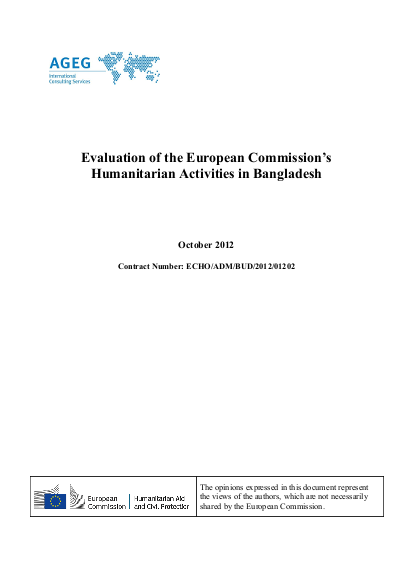
The humanitarian situation in Bangladesh can be described as a unique and complex one; an ambiguous predicament where both humanitarian responses and development aid are needed, often in parallel. It is characterised by extreme poverty, exacerbated by frequent and repetitive disasters and an increasing occurrence of hydrologic shocks brought on by ecological vulnerability to climate change; aggravated by severe malnutrition; by marginalisation of peoples and side-lining their human rights, and an intractable refugee situation. A significant factor contributing to the marginalisation of parts of the population is the rapacious, unregulated capitalist exploitation – ‘land grabbing’/absentee landlordism/shrimp farming strategies of speculators combined with, allegedly, widespread political and bureaucratic corruption. Apart from the critical life-saving aspects in the immediate aftermath of a sudden onset disaster, longer term assistance is also needed further along the relief/development spectrum to rebuild coping mechanisms and restore livelihoods where the need for urgent humanitarian aid is intertwined with an equally vital need to protect gains achieved in many aspects of development in situations of great fragility. In addition, with the vulnerability of Bangladesh to catastrophic disasters (as recently as 1991 Super Cyclonic Storm BOB 01 killed 138,000 people and caused 1.7 billion dollars of damage leaving 10,000,000 people homeless, and the floods of 1998 left 30,000,000 homeless) the possibility that a massive humanitarian response will be needed always exists.
Apart from the urgent life saving aspects in the immediate aftermath of a disaster of any size, however, assistance that is usually required is rebuilding coping mechanisms – the restoration of livelihoods. Thus many of the humanitarian projects of the Commission's partners fall into the category of ‘early recovery’ and thereby follow some of the key principles of humanitarian donorship, especially in providing humanitarian assistance in ways that are supportive of recovery and long-term development, striving to ensure support, where appropriate, to the maintenance and return of sustainable livelihoods and transitions from humanitarian relief to recovery and development activities.